
A Guide to the Sensory Garden
The Sensory Garden at Milton Keynes University Hospital open during daylight hours for staff, patients,
and visitors to enjoy.
The Sensory Garden (formerly the Wheel Courtyard) at Milton Keynes University Hospital was lovingly restored and created by artist Katie Ellen-Fields during 2023.
Location:
The garden is easily accessed from the Eaglestone Restaurant entrance, just follow corridor around and it’s on your left, or the entrance at the bottom of the steps to the Cancer Centre, just turn left up on entering the building and the garden is on your right.
What Three Words: ///paused.glove.insert
Sensory Garden Features Guide
Avenue of Green Poles
Sensory Experience: walk slowly through the avenue of green metal poles, running your hands gently along them as you go. Close your eyes, how do they feel compared to everything around you? Try taping them gently with your fingers or a stick do they make a sound?
The green metal poles were part of the original garden design completed in 2004, led by artist Ulf Pederson. The poles created structure, height and shadows whilst also giving an element of privacy for the adjoining wards whilst the trees and shrubs were in their infancy.
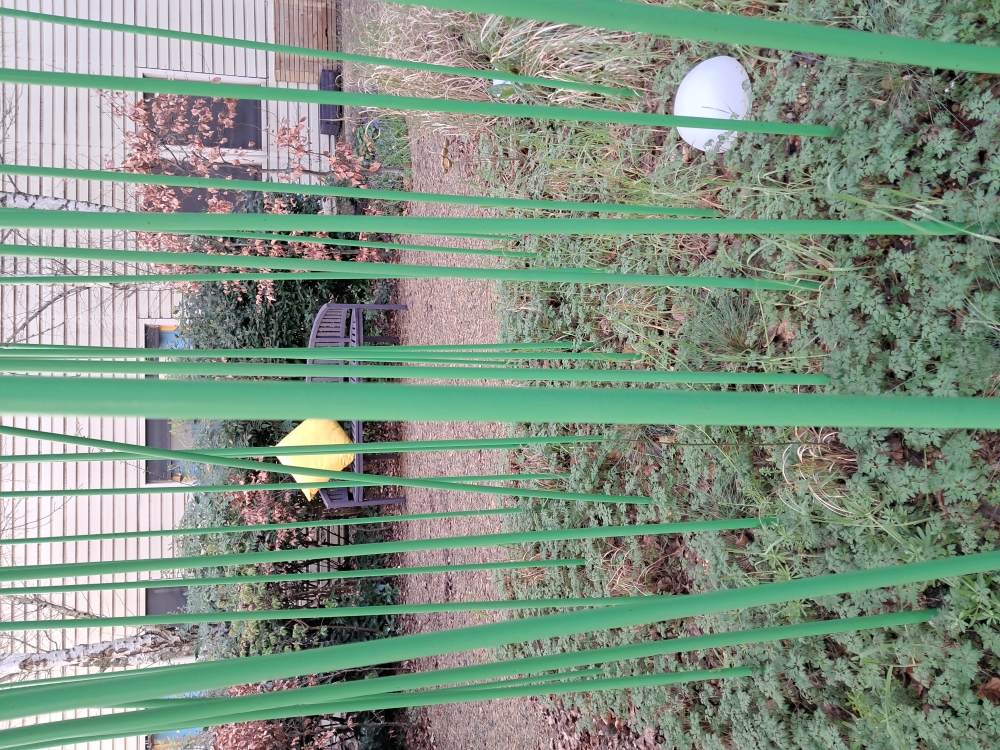

The sculpture
Rosalind Stoddart’s, ‘Wheel’ sculpture Brixworth Country Park, has also been scheduled for repair and return to its original colour. The sculpture has a sound element and musical mallets are provided to ‘play’ the fins of the piece. The original bamboo pole artworks can also be ‘played’ with these tools.
Rosalind Stoddart’s, ‘Wheel’ sculpture Brixworth Country Park, has also been scheduled for repair and return to its original colour. The sculpture has a sound element and musical mallets are provided to ‘play’ the fins of the piece. The original bamboo pole artworks can also be ‘played’ with these tools.
Light Pebbles
The solar light pebbles amongst the grasses emit a dull sensory light with a calming effect. They are set to white light day-to-day but can be programmed to emit coloured lights and patterns for activities and events.
The solar light pebbles amongst the grasses emit a dull sensory light with a calming effect. They are set to white light day-to-day but can be programmed to emit coloured lights and patterns for activities and events.
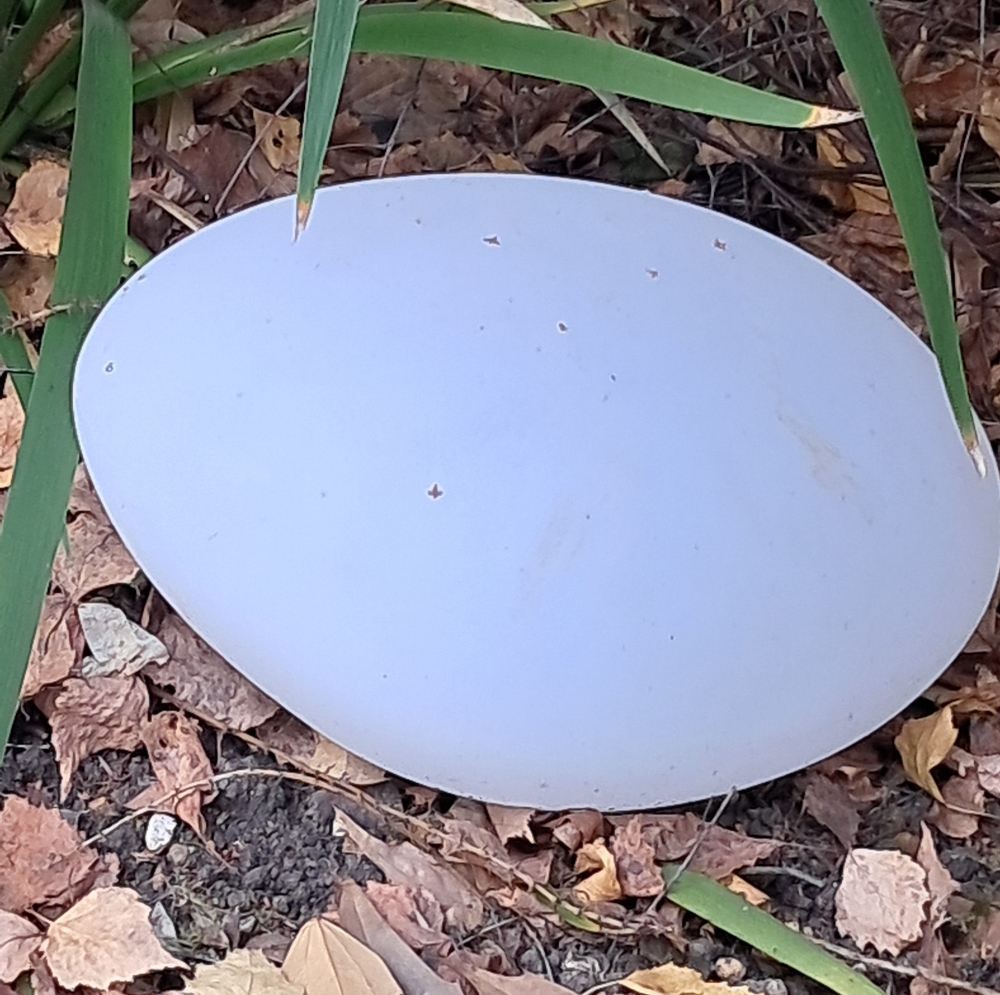
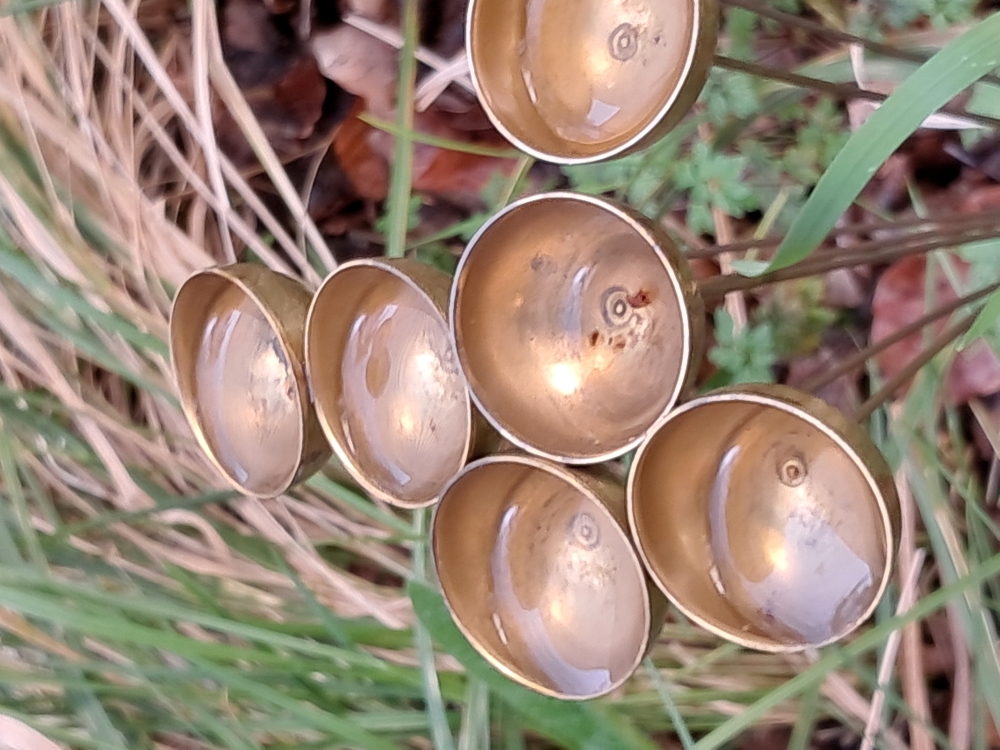
Water Chimes
The bronze metal features planted around the flower beds are water chimes. When it rains, they fill with water and overbalance making a chiming sound as they hit each other. You can also tap them together with your hands.
The bronze metal features planted around the flower beds are water chimes. When it rains, they fill with water and overbalance making a chiming sound as they hit each other. You can also tap them together with your hands.
Flooring
The flooring in the sensory garden is eco friendly, and made from recycled tyres. The surface textures mimics wood bark chips. Pause and feel the springy texture underfoot or between your fingers.
The flooring in the sensory garden is eco friendly, and made from recycled tyres. The surface textures mimics wood bark chips. Pause and feel the springy texture underfoot or between your fingers.
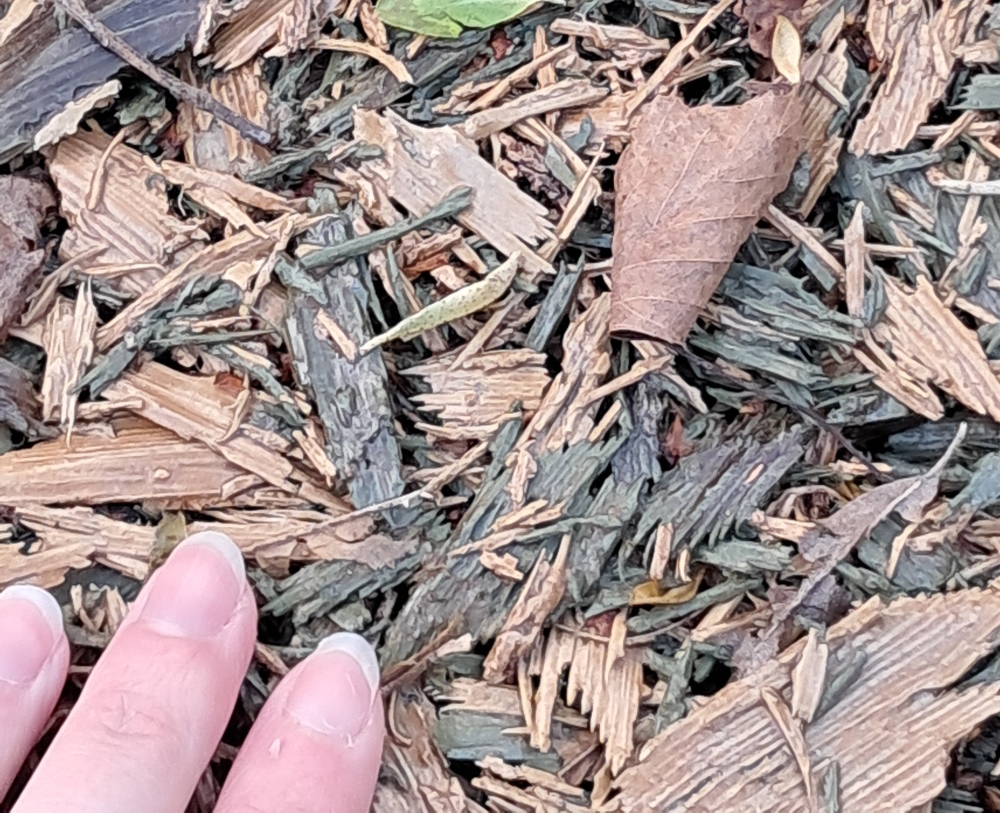

Cushions
Grab a large yellow garden cushion from the storage box and find a quiet spot and sit for a moment, look up beyond the buildings to the clouds above. Feel the textures of the floor below with your hands. When you have finished, place it back on the bench or where you found it.
Grab a large yellow garden cushion from the storage box and find a quiet spot and sit for a moment, look up beyond the buildings to the clouds above. Feel the textures of the floor below with your hands. When you have finished, place it back on the bench or where you found it.
Seating
Generous seating has been added to the garden, stained with an eco-friendly wood varnish. Large water-resistant, outdoor cushions allow visitors to sit and rest in various spots around the garden.
Generous seating has been added to the garden, stained with an eco-friendly wood varnish. Large water-resistant, outdoor cushions allow visitors to sit and rest in various spots around the garden.


Colour Palette
The colour pallet used in the garden was chosen to add contrasts, the purple and yellow cushions, green foliage against the sculpture all complement each other, without being over stimulating.
The colour pallet used in the garden was chosen to add contrasts, the purple and yellow cushions, green foliage against the sculpture all complement each other, without being over stimulating.
Wooden Mobiles
The multicoloured wooden mobiles hanging from the trees were created by the Patient Experience Team with inpatients across the hospital during 2023, the colours used complement the planting in the garden - which is your favourite?
The multicoloured wooden mobiles hanging from the trees were created by the Patient Experience Team with inpatients across the hospital during 2023, the colours used complement the planting in the garden - which is your favourite?

Plants, Trees and Shrubs
Lemon Balm
Dotted around the garden you will find Lemon balm, rub your fingers gently on the leaves to release the scent. Lemon balm is of the herb family. Its sensory profile engages the nervous system and is used to relieve stress and anxiety in herbal medicinal practices.
Dotted around the garden you will find Lemon balm, rub your fingers gently on the leaves to release the scent. Lemon balm is of the herb family. Its sensory profile engages the nervous system and is used to relieve stress and anxiety in herbal medicinal practices.
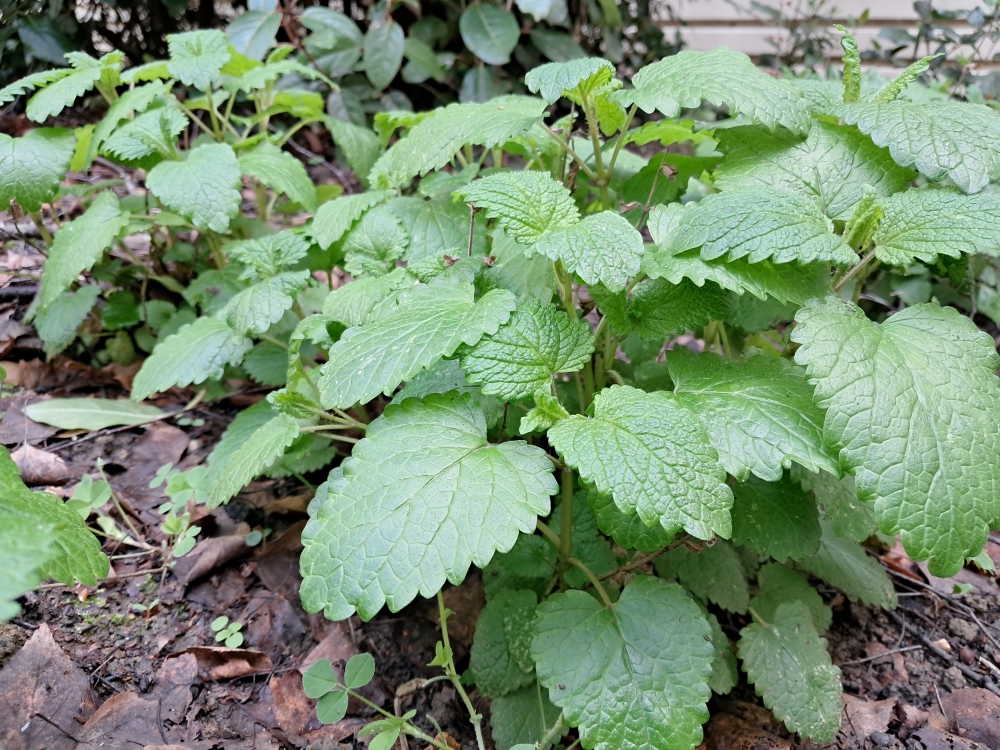

Grasses
The garden is full of different grasses, each adding texture to the flower beds, run your fingers through some close to you to see how different they feel. As they grow bigger, they will also add a sensory sound element if the wind brushes through making a rustling sound.
The garden is full of different grasses, each adding texture to the flower beds, run your fingers through some close to you to see how different they feel. As they grow bigger, they will also add a sensory sound element if the wind brushes through making a rustling sound.
Roast-beef plant
In the garden may be able to spot the roast-beef plant, also known as iris foetidissima, by its scarlet seeds. This plant is sometimes referred to as “stinking” as it releases a “beefy” odour when its leaves are crushed. This plant blooms between June and July but the flowers only last a day or so.
In the garden may be able to spot the roast-beef plant, also known as iris foetidissima, by its scarlet seeds. This plant is sometimes referred to as “stinking” as it releases a “beefy” odour when its leaves are crushed. This plant blooms between June and July but the flowers only last a day or so.


Oregon Grape
This evergreen shrub has sharp leaves and produces clusters of yellow flowers in the spring. You may see small, dark blue/purple fruits which have large seeds in them. These are sometimes used to make jelly, or the Oregon-grape juice can be fermented to create wine.
This evergreen shrub has sharp leaves and produces clusters of yellow flowers in the spring. You may see small, dark blue/purple fruits which have large seeds in them. These are sometimes used to make jelly, or the Oregon-grape juice can be fermented to create wine.
Photinia
In spring and summer, the photinia will stand out due to its striking red leaves. This plant is often used as an ornamental shrub due to its white flowers and mild scent. Photinia also produce fruit which are used as food by birds.
In spring and summer, the photinia will stand out due to its striking red leaves. This plant is often used as an ornamental shrub due to its white flowers and mild scent. Photinia also produce fruit which are used as food by birds.

Rowan Tree
The Rowan tree produces creamy white flowers along with lots of small bright orange or red pome fruits. The Rowan tree has a history in European folklore as it was thought to be magical and give protection against malevolent beings.
The Rowan tree produces creamy white flowers along with lots of small bright orange or red pome fruits. The Rowan tree has a history in European folklore as it was thought to be magical and give protection against malevolent beings.
Aromatic Planters
Lavender
The scent of lavender plants has long been used for the aromatherapy, the colour and scent providing a relaxing therapeutic affect even long after it has been dried. Lavender plants are also a great for attracting pollinators like bees to your garden.
Curry Plants
The curry plant gets its name from the strong aroma of its leaves. If you rub your fingers on one of its leaves, it will leave behind a scent of curry powder. Despite its name, this plant is not used for curry dishes. It is, however, used to add flavour to some Mediterranean meat, fish and vegetable dishes.
The scent of lavender plants has long been used for the aromatherapy, the colour and scent providing a relaxing therapeutic affect even long after it has been dried. Lavender plants are also a great for attracting pollinators like bees to your garden.
Curry Plants
The curry plant gets its name from the strong aroma of its leaves. If you rub your fingers on one of its leaves, it will leave behind a scent of curry powder. Despite its name, this plant is not used for curry dishes. It is, however, used to add flavour to some Mediterranean meat, fish and vegetable dishes.
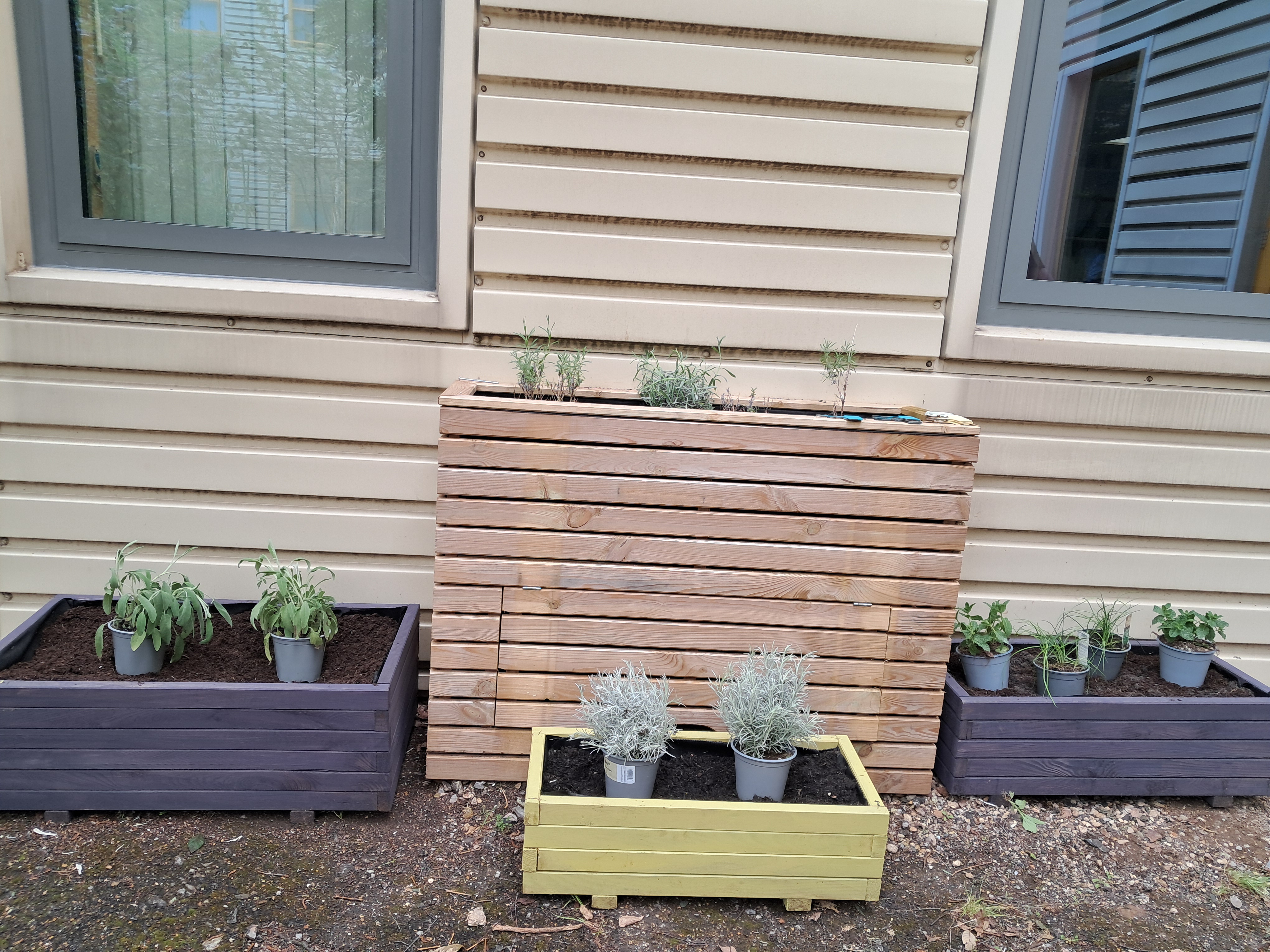
Garlic Chives
When blooming in late summer or autumn, the garlic chives produce a cluster of small white flowers. This plant is popular in Asia for its culinary value, as its flat leaves can be used for flavouring. In warm areas, garlic chives can remain green all year round, but in colder areas the plant will completely die in the winter and resprout in the spring.
Oregano
Oregano is a flowering plant in the mint family. It is a culinary herb used for the flavour of its leaves and has a bitter taste with varying intensity. Oregano is used frequently in Italian cuisine with vegetables, meat and fish.
Sage
The sage plant has been used for culinary purposes for centuries due to its slightly peppery flavour. This plant, which create lavender flowers in the summer, has historically been used medicinally for treating snakebites, and was referred to as the “holy herb” by the Romans.
Strawberry Plants
In 2024 strawberry plants were added to the garden for a sweet treat.
When blooming in late summer or autumn, the garlic chives produce a cluster of small white flowers. This plant is popular in Asia for its culinary value, as its flat leaves can be used for flavouring. In warm areas, garlic chives can remain green all year round, but in colder areas the plant will completely die in the winter and resprout in the spring.
Oregano
Oregano is a flowering plant in the mint family. It is a culinary herb used for the flavour of its leaves and has a bitter taste with varying intensity. Oregano is used frequently in Italian cuisine with vegetables, meat and fish.
Sage
The sage plant has been used for culinary purposes for centuries due to its slightly peppery flavour. This plant, which create lavender flowers in the summer, has historically been used medicinally for treating snakebites, and was referred to as the “holy herb” by the Romans.
Strawberry Plants
In 2024 strawberry plants were added to the garden for a sweet treat.
With thanks to our funders the Postcode Society Trust for their support with this project.
Explore more from the Creative Courtyards below ︎︎︎
Explore more from the Creative Courtyards below ︎︎︎







